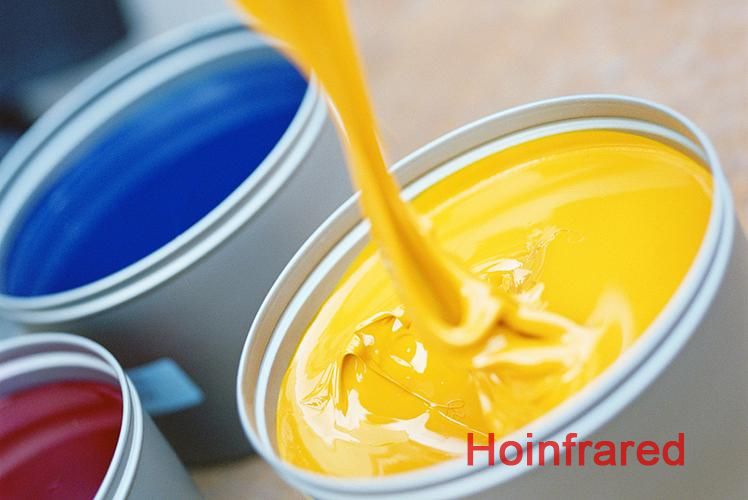
With increasingly strict environmental requirements, almost all printing inks require water-based inks, and various coatings, gloss oils, etc. also require water-soluble materials. Due to the high specific heat capacity and heat of vaporization of water, the evaporation of water solvents is much more difficult than traditional inks. The chemical components of ink and coatings themselves are mostly organic polymers, which require rapid heating to promote polymerization reactions. The infrared heating method has many advantages over traditional hot air heating, such as high energy density, good penetration, almost simultaneous drying of the inside and outside of the coating, and fast speed. But among various infrared light sources, which one is the best?
Infrared radiators can be roughly divided into short wave (0.8-1.4um), medium wave (1.5-3.0um), and long wave (3.0-10um) based on wavelength. Due to the fact that the infrared absorption of water mainly has two strong peaks at 3.0um and 4.5um, using medium and long waves is a better choice. However, compared to medium wave infrared (resistance wire transparent quartz tube), long wave infrared (ordinary ceramic or stainless steel heating tubes) has several major disadvantages: slow reaction speed, poor penetration, and lower power density. So medium wave radiators are the best choice. In addition, medium wave lamp tubes can have a gold-plated reflective layer, which has a higher reflection efficiency than ordinary aluminum metal reflective plates, and is not oxidized in high temperature environments, and there is no concern about the decrease in reflectivity caused by dust. Of course, the thermal efficiency of medium wave tubes is greatly improved. At the same time, due to the fast reaction speed, temperature control is much better.
However, in some fast drying sections that require high energy density, shortwave infrared still has certain applications. Because its power density can be very high and the reaction speed is fast. These are things that medium wave lamps cannot achieve. Although the wavelength of the shortwave lamp does not match the absorption of water and polymer materials, the air temperature near the shortwave lamp tube is very high. If the heated material such as paper is close to the lamp tube, the hot air can also effectively supplement the heating effect. The result is still good. However, for ink and paper that are sensitive to high temperatures, shortwave lamps are not suitable.
In summary, both medium wave and short wave infrared drying are available choices for drying water-based inks and coatings. In most cases, medium wave infrared is the best choice.
This is clear fused Quartz Glass Tube available as continuous machine drawn and automatic controlled tubing.This glass has the typical characteriastics of high ......
Special Infrared Heating Lamp IR heating tube can be customized into a variety of different shapes to meet the requirements of different industrial environment......